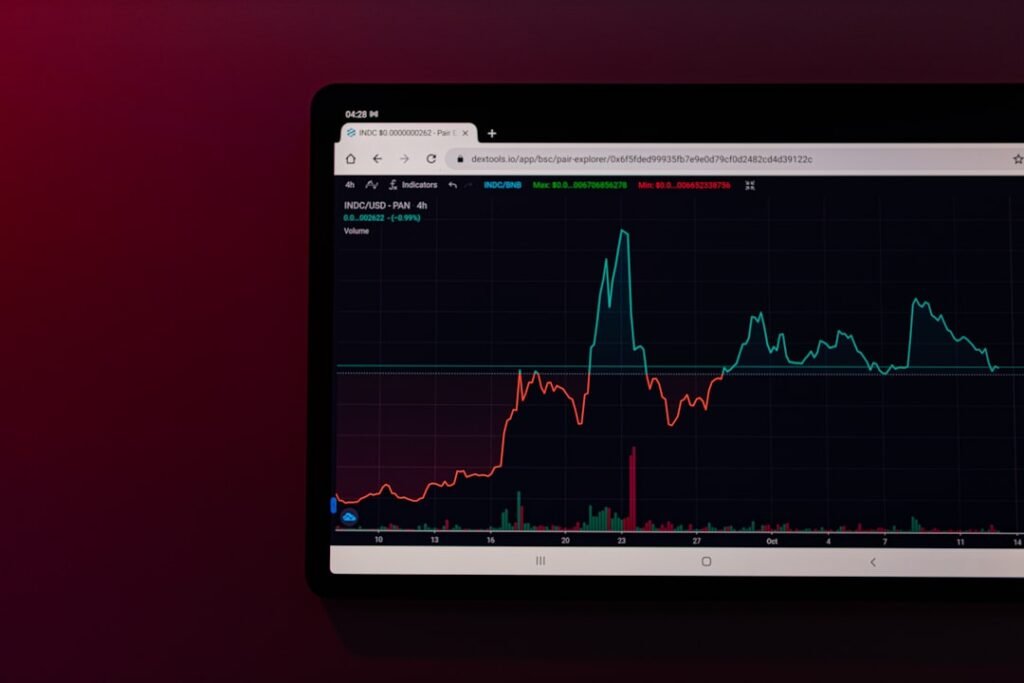The Ultimate Guide to White Label Crypto Exchange Platforms in 2025 The cryptocurrency landscape is evolving at a breakneck pace, and for businesses looking to enter this dynamic market, white label crypto exchange platforms have emerged as the strategic shortcut to success. These pre-built, customizable solutions are revolutionizing how companies launch their trading platforms, offering enterprise-grade technology without the massive development overhead. In an era where speed-to-market can determine success or failure, white label solutions provide the perfect balance of customization and efficiency. Whether you're a fintech startup, a traditional financial institution, or a Web3 native project, understanding these platforms is crucial for capitalizing on the crypto revolution. What Exactly is a White Label Crypto Exchange? A white-label cryptocurrency exchange is essentially a ready-made trading platform that businesses can license and rebrand as their own. Think of it as renting a fully-furnished apartment in the blockchain world—you get everything you need without building from scratch. These platforms come with trading engines, liquidity integrations, security frameworks, and compliance tools that would otherwise take years and millions of dollars to develop. The fundamental advantage lies in the deployment speed. While building an exchange from scratch can take over eight months and cost upwards of $100,000s, white-label solutions can launch in weeks. This accelerated timeline doesn't mean compromising on quality—modern white-label platforms incorporate battle-tested technology that has processed billions in trading volume. Critical Features That Separate Elite Platforms from The Rest Enterprise-Grade Security Architecture In the crypto world, security isn't just a feature—it's the foundation. Top-tier white label exchanges implement multi-layered security protocols including: Cold Storage Solutions: Keeping the majority of assets offline to prevent cyber theft Multi-Signature Wallets: Requiring multiple authorizations for transactions Two-Factor Authentication (2FA): Adding crucial login security layers DDoS Protection: Ensuring platform stability during traffic surges Regular Security Audits: Continuous vulnerability assessment and penetration testing Hardware Security Modules (HSMs): Enterprise-grade protection for private keys Platforms like HollaEx® have open-source, battle-tested code that has secured billions in transactions, while Blockchain App Factory designs its architecture with SEC alignment in mind from the ground up. Liquidity Integration: The Lifeblood of Trading Liquidity determines whether your exchange thrives or struggles. Empty order books drive users away, while deep liquidity attracts serious traders. Leading white-label solutions solve this through: Pre-integrated Liquidity Pools: Access to institutional liquidity providers Market Maker Partnerships: Ensuring tight bid-ask spreads from day one Liquidity Aggregation: Pulling depth from multiple external exchanges Proprietary Liquidity Solutions: Some providers, like Blockchain App Factory, offer their own liquidity pools The result? New exchanges can launch with competitive trading conditions that match established platforms, eliminating the classic chicken-and-egg problem of building liquidity. Regulatory Compliance Built-In The regulatory landscape for crypto exchanges has matured significantly, particularly in the United States. Premium white-label platforms now come with compliance frameworks that include: KYC/AML Automation: Integrated identity verification systems Transaction Monitoring: Real-time suspicious activity detection Audit Trail Generation: Comprehensive logging for regulatory inspections Region-Specific Adaptations: Configurable rules for different jurisdictions License-Ready Architecture: Preparation for MSB, BitLicense, or other regional requirements This regulatory readiness is crucial in 2025, as jurisdictions worldwide implement stricter frameworks like Europe's MiCA regulations. Modular Architecture for Future Growth The best white-label solutions aren't monolithic—they're built with expansion in mind. Modern platforms feature: Microservices-Based Design: Independent components that can scale individually API-First Approach: Easy integration with third-party services Feature Modules: The ability to add spot trading, derivatives, staking, or NFT marketplaces as needed Custom Token Support: Tools for launching and managing native tokens DeFi Bridge Capabilities: Connection to decentralized finance protocols Openware's OpenDAX platform exemplifies this approach, separating wallet services, order books, and user dashboards into independently scalable components. The Leading White Label Exchange Solutions of 2025 Blockchain App Factory: The All-in-One Powerhouse With over a decade of Web3 experience, Blockchain App Factory has become the backbone for numerous successful exchanges. Their solution stands out for: Rapid Deployment: Launch-ready in as little as 90 days SEC-Aligned Architecture: Built with U.S. compliance requirements in mind Comprehensive Feature Set: Spot trading, derivatives, copy trading, staking, and fiat ramps Deep Liquidity Access: Proprietary pools and institutional provider integrations Tokenization Expertise: Support for token launches and real-world asset trading Ideal for: Entrepreneurs, VCs, institutions, and Web3 protocols looking for a full-stack solution with compliance readiness. HollaEx: The Developer-First Toolkit HollaEx takes a unique open-source approach that appeals to technical founders and developers: Deployment Flexibility: Choice between self-hosted or cloud-based solutions Open-Source Foundation: Full code transparency and customization capability Built-in Wallet Infrastructure: Complete crypto wallet solution supporting major assets Rapid Launch Capability: Testing and deployment in hours, not weeks Cost-Effective Pricing: Accessible for startups and bootstrap projects Ideal for: Technical founders, Web3 developers, and projects wanting full control without enterprise pricing. AlphaPoint: Institutional-Grade Performance AlphaPoint brings Wall Street-level technology to the crypto space: High-Frequency Trading Engine: Ultra-low latency order matching Multi-Asset Support: Crypto, tokenized securities, and real-world assets Bank-Grade Security: Institutional custody options and risk management Global Compliance Framework: Adaptable to multiple regulatory jurisdictions Proven Scale: Technology that has processed over $1 trillion in volume Ideal for: Licensed brokers, traditional finance entrants, and institutions requiring enterprise-grade infrastructure. Openware (OpenDAX): Scalability-First Architecture Openware focuses on building exchanges that can grow without limits: Microservices Architecture: Independently scalable exchange components Advanced Risk Management: Institutional-grade trading surveillance Fiat Banking Integration: Multiple payment rail options Liquidity Aggregation: Intelligent order routing across multiple sources Customization Depth: Deep technical customization capabilities Ideal for: High-volume exchanges, tokenization platforms, and digital banks planning significant scale. Strategic Implementation: From Concept to Live Exchange Phase 1: Planning and Compliance Foundation Before any technical implementation, establish your legal and business framework: Business Model Definition: Revenue streams (trading fees, withdrawal fees, premium services) Regulatory Strategy: MSB licensing, state-level compliance, international considerations Target Market Analysis: Retail traders, institutions, or specific geographic regions Legal Partnership Setup: Engage crypto-savvy legal counsel early This foundation determines your long-term viability more than any technical feature. Phase 2: Platform Customization and Branding With your legal framework in place, focus on creating a distinctive user experience: UI/UX Customization: Align the platform with your brand identity and user expectations Feature Selection: Choose between spot trading, derivatives, staking based on your market Mobile Strategy: Native iOS and Android apps are now table stakes Payment Integration: Support for local fiat currencies and payment methods Phase 3: Liquidity and Market Preparation An exchange without liquidity is like a nightclub with no music—empty and unappealing: Liquidity Provider Integration: Connect to market makers and liquidity aggregators Initial Token Listings: Curate a balanced selection of established and emerging assets Market Seeding: Ensure sufficient order book depth before public launch Beta Testing: Invite trusted users to test trading and provide feedback Phase 4: Security Hardening and Compliance Activation Before going live, ensure your security and compliance measures are fully operational: Penetration Testing: Professional security assessment of the entire platform KYC/AML Dry Runs: Test the complete user onboarding workflow Disaster Recovery Planning: Prepare for potential security incidents Regulatory Documentation: Ensure all required policies and procedures are in place Phase 5: Launch and Growth Marketing A successful launch requires more than just technical readiness: Staged Rollout: Consider starting with invited users before public launch Launch Incentives: Trading competitions, fee discounts, or token airdrops Community Building: Engage potential users through social media and forums Continuous Improvement: Gather user feedback and rapidly iterate The Real Cost of Running a White Label Exchange Understanding the total cost of ownership is crucial for planning and sustainability: Initial Setup Costs Platform License: $30,000 – $250,000+ depending on features Custom Development: $10,000 – $100,000 for unique requirements Legal and Compliance: $20,000 – $100,000 for licensing and legal setup Monthly Operating Expenses Cloud Hosting: $5,000 – $50,000 depending on scale Third-Party Services: KYC/AML, transaction monitoring, security audits Team Costs: Technical, customer support, and marketing staff Liquidity Costs: Market maker fees or spread costs Revenue Streams Trading Fees: Typically 0.1% – 0.5% per trade Withdrawal Fees: Fixed or percentage-based withdrawal charges Token Listing Fees: One-time or recurring fees for project listings Premium Services: OTC trading, API access, or institutional services Most exchanges reach break-even with 50,000+ active users or $50-100 million in monthly volume, typically within 12-18 months of launch. Choosing Your Perfect Platform Match The ideal white-label solution depends entirely on your specific situation: Bootstrapped Startups: HollaEx offers the best balance of cost and capability VC-Backed Ventures: Blockchain App Factory provides rapid scaling and feature depth Traditional Finance Entrants: AlphaPoint delivers institutional-grade reliability Technical Teams Needing Flexibility: Openware enables deep customization Agencies Launching Multiple Exchanges: White Label Wonder's marketplace approach offers variety The Future of White Label Crypto Exchanges As we look beyond 2025, several trends are shaping the evolution of white-label solutions: AI Integration: Smarter trading features, risk management, and customer support DeFi Composability: Deeper integration with decentralized protocols Tokenization Expansion: Support for more real-world assets and security tokens Cross-Chain Interoperability: Native support for multiple blockchain networks Enhanced Compliance Automation: AI-driven regulatory monitoring and reporting The white-label crypto exchange market has matured from basic template solutions to sophisticated financial infrastructure. For businesses looking to enter the digital asset space, these platforms offer a proven path to market with reduced risk and accelerated timelines. The key to success lies not just in choosing the right technology partner, but in executing a comprehensive strategy that balances technical capability with business acumen and regulatory awareness. In the rapidly evolving world of cryptocurrency, the ability to move quickly while maintaining security and compliance has never been more valuable. White-label exchanges provide that capability, democratizing access to exchange technology and fueling the next wave of innovation in digital asset trading.












